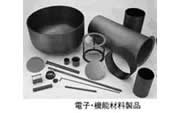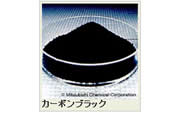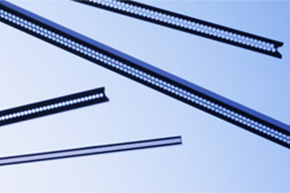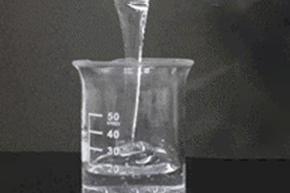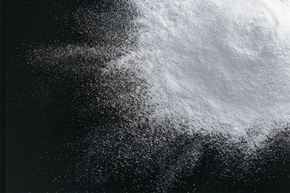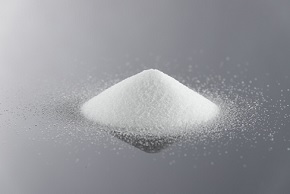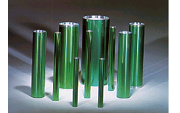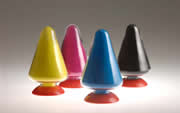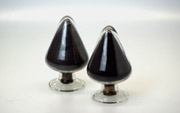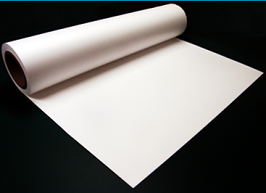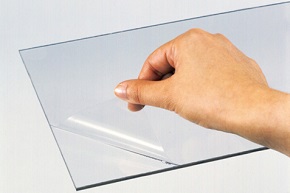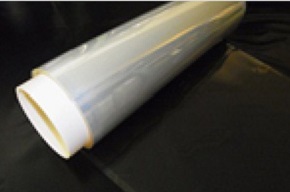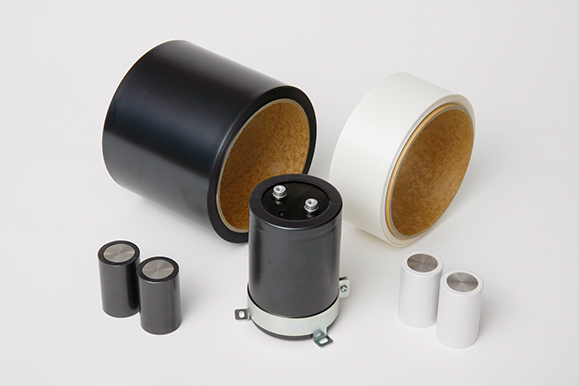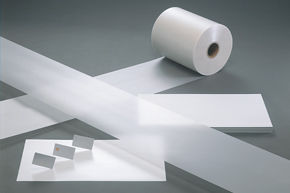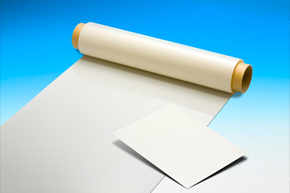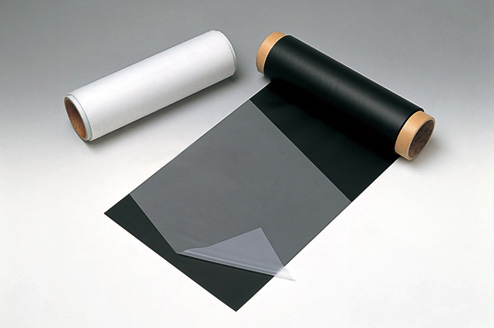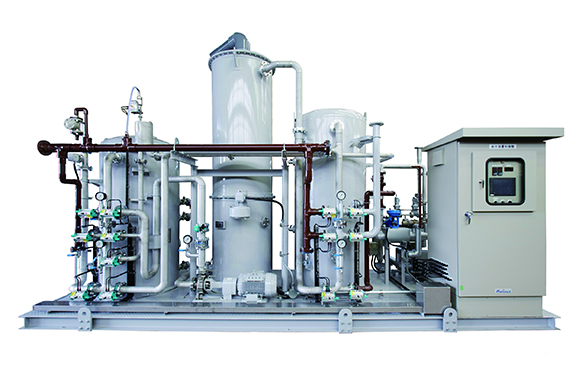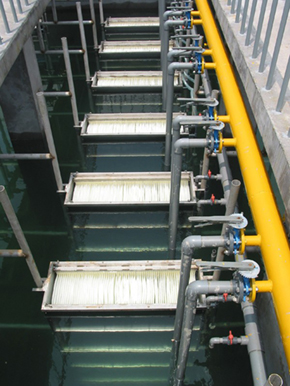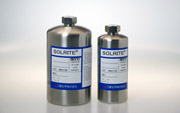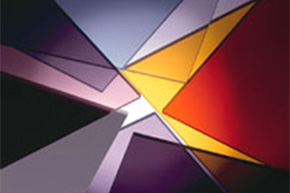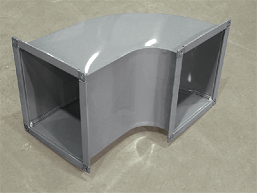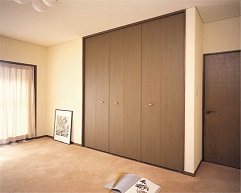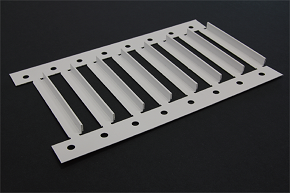Electronics & IT
324 products.
Filter by business area
[Close]
234 products.
[Close all]
High Purity Ethylene Carbonate
[Close]
High Purity Ethylene Carbonate. As ethylene carbonate is a highly polar solvent and dissolves large amount of electrolyte, it is mainly used in lithium batteries electrolyte solution. It can also readily dissolve polymers leading to use as a release agent and detergent. Our product is high quality with low impurity levels and low moisture. It has earned an excellent reputation for adherence to the strict quality standards demanded by our customers.
EINECS: No.202-510-0
Japan, Chemical Substances Control Law: METI-No. 5-523
Ethylene Carbonate
[Close]
As ethylene carbonate is a highly polar solvent and dissolves large amount of electrolyte, it is mainly used in lithium batteries electrolyte solution. It can also readily dissolve polymers leading to use as a release agent and detergent. Our product is high quality with low impurity levels and low moisture. It has earned an excellent reputation for adherence to the strict quality standards demanded by our customers.
EINECS: No.202-510-0
Japan, Chemical Substances Control Law: METI-No. 5-523
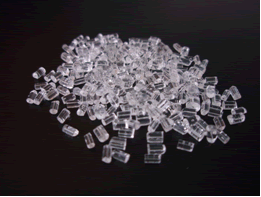
DURABIO™ is a bio-based polycarbonate resin derived mainly from plant-based isosorbide. Compared with conventional polycarbonate resin (hereafter abbreviated PC resin) made from bisphenol A (hereafter abbreviated BPA), DURABIO™ features high transparency, excellent optical properties, and outstanding scratch resistance. Its puncture impact behaviour are comparable to those for PC resin. DURABIO™ is a plant-derived polymer but is not biodegradable. It has excellent durability, making possible its deployment in a wide variety of applications such as for optical ・energy related components, a substitute for high-performance glass components, as well as for electronic equipment ・ automotive housings ・ interior and exterior decor.
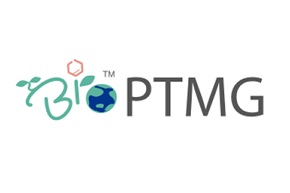
BioPTMG is a polyether polyol manufactured from plant-derived raw materials.
BioPTMG has the same performance as petroleum-derived PTMG as a raw material for polyurethane and polyester resins and has excellent impact, wear and hydrolysis resistance, flexibility at low temperatures, etc. Taking advantage of these characteristics, it can be used in a wide range of fields, from interior and fashion to industrial materials.
- Grades:
- BioPTMG650、BioPTMG1000、BioPTMG2000、BioPTMG3000
- Japan, Chemical Substances Control Law:
- (7)-129
- Japan, Poisonous and Deleterious Substances Control Law:
- Not applicable.
- Japan, Fire Services Law:
- Hazardous Material Class 4 Petroleums No.4 Hazardous Rank III(BioPTMG650)
Combustible Materials, Flammable Solids(BioPTMG1000, 2000, 3000)
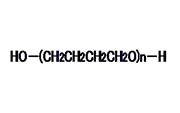
PTMG (Poly(tetramethylene ether)glycol / PTMG) is a linear polyether glycol with hydroxyl groups on both ends. As a polyol, it reacts readily with isocyanates (for example MDI, TDI), etc. to make resins with excellent properties.
- Grades:
- PTMG250、PTMG650、PTMG850、PTMG1000、PTMG1300、PTMG1500、PTMG1800、PTMG2000、PTMG3000、PTMG3200(developed grade in mass production)
- Japan, Chemical Substances Control Law:
- METI-No. 7-129
- Japan, Poisonous and Deleterious Substances Control Law:
- Not applicable.
- Japan, Fire Services Law:
- Hazardous Material Class 4 Petroleums No.3 Hazardous Rank III (PTMG250)
Hazardous Material Class 4 Petroleums No.4 Hazardous Rank III (PTMG650,850)
Combustible Materials, Flammable Solids (PTMG1000, 1300, 1500, 1800, 2000, 3000, 3200(developed grade in mass production))
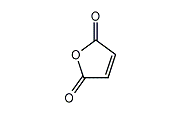
Maleic anhydride is produced by oxidation of benzene or a C4 hydrocarbon such as butane in the presence of a vanadium oxide catalyst. Maleic anhydride can be converted to maleic acid by hydrolysis and to esters by alcoholysis.
- EINECS: No. 203-571-6
- Japan, Chemical Substances Control Law: METI-No. 2-1101
- Japan, Industrial Safety and Health Law: Dangerous Goods and Toxic Substances Whose Names Should be Labeled and be Notified Appended Table 2-1978
- Japan, Poisonous and Deleterious Substances Control Law: Not applicable.
- Japan, Fire Services Law: Not applicable.
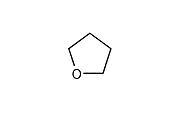
THF (Tetrahydrofuran) is a stable compound with relatively low boiling point and excellent solvency. It is widely-used for dissolution and reaction of various substances. Also it is used as a starting material for the synthesis of poly(tetramethylene ether) glycol (PTMG), etc. Since 1982, Mitsubishi Chemical's Tokai plant has produced high-purity, high-quality THF from butadiene using our proprietary technology.
- EINECS: No. 203-726-8
- Japan, Chemical Substances Control Law: METI-No. 5-53
- Japan, Industrial Safety and Health Law: No. 5-53
- Japan, Industrial Safety and Health Law: Dangerous Goods and Toxic Substances Whose Names Should be Labeled and be Notified Appended Table 2-1278
- Japan, Poisonous and Deleterious Substances Control Law: Not applicable.
- Japan, Fire Services Law: Hazardous Material Class 4 Petroleums No.1 (water-soluble liquid). Hazardous Rank II
- U.N. Class: 3
- U.N. No.: UN2056
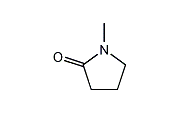
NMP (N-Methyl-2-Pyrrolidone) is a polar solvent with outstanding characteristics. It has a wide range of applications because it offers very high solvency, high boiling point, low freezing point, and ease of handling.
- EINECS: No. 212-828-1
- Japan Chemical Substances Control Law: METI-No. 5-113
- Japan, Industrial Safety and Health Law: No. 8-1-1014
- Japan, Industrial Safety and Health Law: Dangerous Goods and Toxic Substances Whose Names Should be Labeled and be Notified Appended Table 2-2108
- Japan, Poisonous and Deleterious Substances Control Law: Not applicable.
- Japan, Fire Services Law: Hazardous material Class 4 Petroleums No.3 (water-soluble liquid).
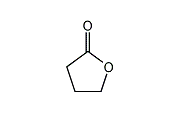
GBL has a wide range of practical applications because of its low freezing point, high boiling point, and a unique combination of solvent and electrical properties. It has applications as a solvent for special resins, in photography, in batteries, and as an electrolyte. Also a number of derivatives are synthesized from GBL.
- EINECS: No. 202-509-5
- Japan Chemical Substances Control Law: METI-No. 5-3337
- Japan, Industrial Safety and Health Law: No. 5-3337
- Japan, Industrial Safety and Health Law: Dangerous Goods and Toxic Substances Whose Names Should be Labeled and be Notified Appended Table 2-412
- Japan, Poisonous and Deleterious Substances Control Law: Not applicable.
- Japan, Fire Services Law: Hazardous material Class 4 Petroleums No.3 (water-soluble liquid).Aprotic, polar solvent.
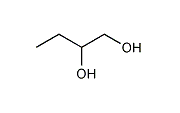
12BG (1,2-butanediol) is a branched glycol that has a primary hydroxyl group and a secondary hydroxyl group on adjacent carbon atoms. Mitsubishi Chemical Corporation offers two grades of purity. Both can be reacted with a dicarboxylic acid (e.g., phthalic acid or adipic acid) for use as a polyester polyol or a plasticizer, or reacted with an unsaturated dicarboxylic acid (e.g., maleic anhydride) for use as a raw material for unsaturated polyester resin. The high-purity grade 12BG is suitable for use as a solvent for inks and as a raw material for surfactants.
- EINECS: No. 209-527-2
- Chemical Substance Control Law (CSCL): METI-No. 2-235
- Japan, Industrial Safety and Health Act (ISHA): No. 2-235
- Japan, Poisonous and Deleterious Substances Control Act: Not applicable.
- Japan, Fire Service Act:Hazardous Materials, Category IV—Class III petroleums (water soluble liquids)
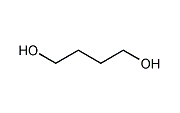
14BG (1,4-Butanediol) is a straight chain glycol with hydroxyl groups on both ends. It is used as a raw material for high performance polyester and polyurethane resins as well as for industrial chemicals like tetrahydrofuran and gamma-butyrolactone. Since 1982, Mitsubishi Chemical's Tokai plant has produced high-purity, high-quality 14BG from butadiene using our proprietary technology.
- EINECS: No. 203-786-5
- Japan, Chemical Substances Control Law: METI-No. 2-235
- Japan, Industrial Safety and Health Law: No. 2-235
- Japan, Poisonous and Deleterious Substances Control Law: Not applicable.
- Japan, Fire Services Law: Hazardous material Class 4 Petroleums No.3 (water-soluble liquid).
Polycarbonatediol, BENEBiOL™
[Close]
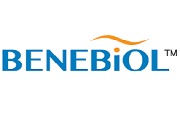
Polycarbonatediol(PCD) is a linear polycarbonate with hydroxyl groups at both ends. It easily reacts with isocyanate compounds(e.g. MDI, TDI, IPDI, H12MDI), and generates polymers with characteristics such as durability and chemical/hydrolysis resistance. BENEBiOL™ is the biomass-based PCD developed by our proprietary manufacturing technology. Because of “key monomer“ of each grade, polyurethane resins based on BENEBiOL™ will show an outstanding property level with regard to flexibility and chemical/stain resistance for example, in addition to the characteristics of conventional PCD. Besides, your product will be equipped with unique touch and feeling.Biomass-based polycarbonatediol with superior characteristics
Characteristics of polyurethane resins based on BENEBiOL™
non-edible raw material is used for some grades
transparency, stain resistance, chemical resistance, durability, toughness, weather resistance
flexibility, soft feel and touch, high hardness, good fit
NOVADURAN™ PBT resin has excellent electrical insulation performance, good chemical resistance, moldability. Taking advantage of these characteristics, it has been widely used as a material for automotive ,E&E, and high-performance film applications.
XANTAR™ PC has excellent transparency, impact resistance, flame reistance, heat resistance, electrical properties.
Taking advantage of these characteristics, it has been widely used as a material for automotive ,E&E,
and high-performance extrusion applications.
Pitch Coke
[Close]
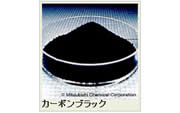
MITSUBISHI™ Carbon Black is a black pigment that has been used in a wide range of fields such as newspaper ink, printing ink, colored resin, paint, toner, colored paper, India ink, and ceramics.
Various grades of carbon blacks are available ranging from all- purpose grade to high-grade. In addition, our line of products includes industrial and environmentally-friendly carbon blacks.
- Carbon Black Association Handbook 3rd edition (Ref. 1)
- Carbon Black Association Annual Report No.75(2025)(Ref. 2)
Acrylic Sheet, SHINKOLITE™
[Close]
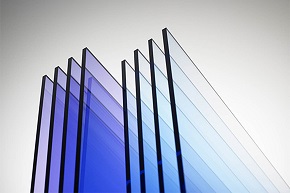
SHINKOLITE™ is the registered trade name of Mitsubishi Chemical's continuous cast acrylic sheet. Known as acrylic resin, this material has excellent weather resistance, stainability, and processability properties, and so is used in many applications such as signage, display, large water tanks, LCDs, and light guide plates. We will continue to leverage these properties and develop new products such as the flame-retardant and impact-resistant grades of SHINKOLITE. It is our goal to provide environmentally friendly products that make society safer and help people to have more comfortable and prosperous lives.
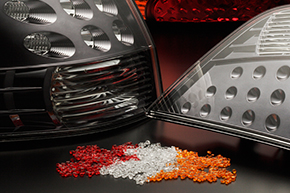
Methacrylic resin is an extremely high-quality material and is sometimes referred to as the "queen of plastics" due to having the highest degree of transparency among plastics as well as other excellent properties including weather resistance, chemical resistance, hardness, and attractiveness. This material is used in many products used in everyday life such as automobiles, building materials, household appliances, and optical goods.
Plastic Optical Fiber, Eska™
[Close]
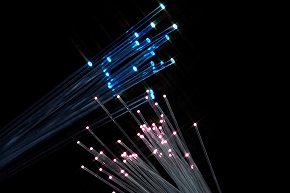
ESKA is a plastic optical fiber product that exploits the excellent light-transmission properties of acrylic resins. It possesses a number of important characteristics not found in glass optical fiber, including light weight, flexibility, and easy processability. We are marketing ESKA for a wide number of applications in the fields of automotive networks, lighting, sensors, FA (Factory Automation) and data transmission.
Rod Lens Arrays, Rodscope™
[Close]
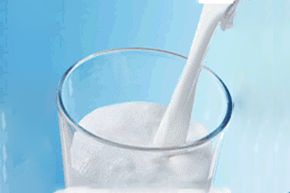
- Emulsion Type Resin (HX,LX,NT series)
-
Emulsion type resin is a water-based resin produced by emulsion polymerization. Our product line-up includes acrylic resins, acrylic-silicone resins, acrylic-urethane resins, acrylic-olefin resins, and organic-inorganic hybrid resins, which meets customers' requirements in various applications, mainly for paints.
SURFLEN™ is a modified polyolefin elastomer with improved weather resistant adhesion and low temperature flexibility/shock resistance. It was developed uniquely in our company as a primer for coating non-polar olefin resin surfaces such as polypropylene (PP) and polyethylene (PE). SURFLEN™ binds well not only to polyolefin but also to various plastics and metal materials, and can be used in a wide range of applications including paints, print and adhesive primers for these materials.
Antistatic Agent, SAFTOMER™
[Close]
SAFTOMER™ is an ionic acrylic coating material used for surface coating as an antistatic agent. It is made of a polymer that yields a lasting antistatic property.
UV Curable Coatings, DIABEAM™
[Close]
UV/EB Curable Resin, Yupimer™ UV
[Close]
Yupimer™ UV series are functional hard coating materials developed by Mitsubishi Chemical Co., with distinctive technologies. They have various functions such as antistatic, anti-fingerprint, slipperiness, and moldable.

- Acrylic Pressure Sensitive Adhesives (PSA)
―To Create New Value for Your Needs -
COPONYL is pressure sensitive adhesive(PSA) resin made mainly from acrylic acid ester using such solvents as ethyl acetate and toluene. The demand for PSA is increasing and expanding: they are now used in a wide range of applications including labels, single/double-sided tapes, foams, and electronic applications such as protective masking films.
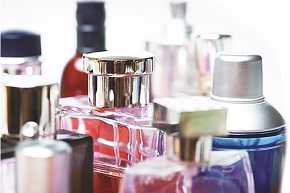
- SHIKOH ――UV Curable Resin from Mitsubishi Chemical
-
UV curable resin is garnering wide spread attention for its low-polluting, energy-saving properties and high productivity.
Mitsubishi Chemical offers a wide lineup of such resin under the SHIKOH brand name, with a special emphasis on urethane acrylate oligomer.
In addition to hard coating application, SHIKOH is suitable for use in a wide range of applications. Mitsubishi Chemical's SHIKOH holds the key to the future of ultraviolet curable resin.
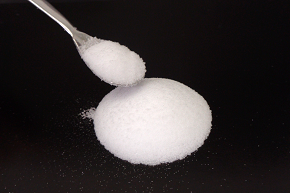
Acrylic Beads Resin
Acrylic beads resin is a solid bead-shaped methacrylic resin produced by suspension polymerization. Being solid and non-hazardous, customers can choose their own solvents, and it is easy to transport and store. We have manufacturing sites and sales networks around the world, enabling us to supply globally. We provide free samples from 500g for customers' initial study.
Acrylic Resins for Coating
[Close]

- We maximizes the potential of acrylic resin as a coating material
-
Based on the basic features of acrylic resin such as "transparency" and "high weather resistance," Mitsubishi Chemical contributes to solving customers' problems with its abundant product lineup and prompt and comprehensive customer service.
Utilizing our own methacrylate monomers, we produce and sell globally competitive and stable quality products.
Our resins are being used in a wide range of applications such as paints, inks, and adhesives.
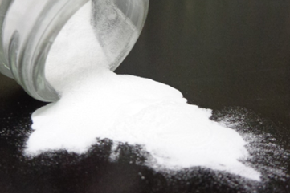
Acrylic Powder Resin
Acrylic powder resin is a fine powder resin made by spray-drying acrylic resin emulsion on particles. Core/shell type structural design is possible, and we are developing products that can demonstrate their characteristics in various applications. It shows good solubility in various solvents and liquid resins.
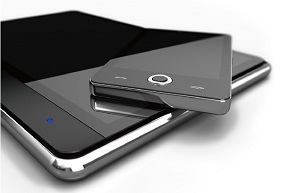
- From Current Needs into the Future
-
Nichigo-POLYESTER recreates the fields of high-tech adhesives, coating binders, and resin modification.
Nichigo-POLYESTER displays excellent adhesive performance with plastic films and moldings including PET, polycarbonate, and vinyl chloride, and metals including aluminum and copper. Used in tandem with isocyanate, melamine, and epoxy resins and other hardening agents, they offer increased heat resistance, solvent resistance, and hardness. Mitsubishi Chemical offers the optimum line-up for all customer needs, including amorphous solvent-soluble, crystalline hot melt, water-soluble, and special types.
Modifiers, METABLEN™
[Close]
METABLEN A type is acrylic-modified PTFE. With small amount of addition, it greatly improves the melt tension that is required in such processing as vacuum molding, foam molding, blow molding and profiling by minimizing increases in melt viscosity without sacrificing the inherent properties of thermoplastics.
METABLEN P type is an acrylic processing aid that offers significant benefits to processors of PVC, ABS, polycarbonate and other thermoplastics. METABLEN P type greatly improves the melt elasticity of thermoplastics and promotes fusion of PVC with addition of low use levels. These products are designed to offer maximum dispersability in much kind of thermoplastics. METABLEN P type is possible to correspond wide range of molecular weight.
METABLEN L type is an acrylic external lubricant that offers exceptional benefits to PVC processors with addition of very low levels. The low use levels mean that there will be scarcely effect on clarity, heat stability, chemical resistance and physical properties. As METABLEN L type introduces low haze contribution and excellent metal release, it is ideal for calendering, blow molding and extrusion applications.
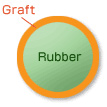
METABLEN C, E, W and S series are core-shell rubber impact modifiers for compounding into thermoplastics. Depending on the desired properties you can select:
C and E series having butadiene-based rubber for excellent impact strength
W series having acrylic based rubber for excellent weatherability
S type having our unique silicone-acrylic hybrid rubber for overall superior impact strength and weatherability
Matting agent, METABLEN™ Type F
[Close]
METABLEN F type acrylic gloss control agent.
This additive is designed to offer maximum dispersibility of thermoplastics. As cross linked particles exist on the surface of final products, the light is dispersed. This structure gives mat appearance to the final product.
METABLEN F type can be also used as a blocking inhibitor for film and sheet.
METABLEN H-602 is an acrylic heat distortion resistant modifier for PVC.
How to Treat, METABLEN™
[Close]
DIACARNA™ is a synthetic wax copolymer of α-olefin and maleic anhydride. Applications include as an compounding additive for resin mold lubricant and release agent, compatibilizer and as a binder for thermal transfer inks.
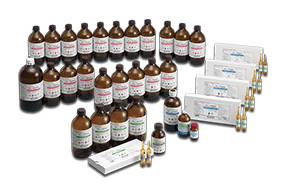
AQUAMICRON™ is a high-precision reagent designed for a wide range of moisture measurement applications using the Karl Fischer method. Our comprehensive lineup includes reagents for both coulometric and volumetric titration, as well as certified water standards.
For coulometric titration, we offer combinations of anolyte (e.g., AX etc.) and catholyte (CXU), along with convenient single-solution electrolytes (FLS) that simplify maintenance. For volumetric titration, our portfolio includes traditional pyridine/chloroform-based titrants (SS series), as well as environmentally friendly pyridine-free and chloroform-free alternatives (SS-Z series), complemented by a variety of dehydration solvents tailored to different sample types.
This website provides access to detailed catalog, technical manual, instructional videos, FAQ, and request forms for SDS and COA documentation.
Injection Molded Products
[Close]
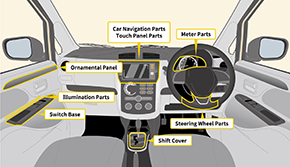
The High-performance Molding Systems Division has injection molding production bases in Nagahama City in Shiga Prefecture and Ogaki City in Gifu Prefecture. We provide various high-quality products primarily in the automotive industry via a consistent production process from die manufacturing to product delivery so as to meet our customers' needs. Our in-house production system incorporates many different coating technologies in addition to our injection molding technologies.
Roller (CARBOLEADER ™)
[Close]
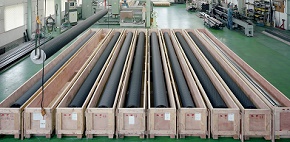
CARBOLEADER™ is a carbon roller that simultaneously offers light weight, high rigidity, and a high critical number of revolutions. It is used for a wide range of applications, including separators for rechargeable batteries, for optical applications and all kinds of films, for printing, and paper manufacture. It can significantly increase productivity and reduce costs by improving production quality and speed, and reducing defect rates.
C/C composite, C/SiC composite
[Close]
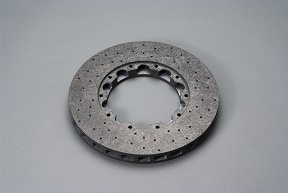
C/C (carbon fiber reinforced carbon) composites are made of carbon matrix reinforced with carbon fiber, and have high strength, high elasticity, high toughness, and ultra-high heat resistance, and can be used at temperatures above 1,000ºC.
C/SiC, also known as ceramic matrix composite (CMC), is a composite material with a ceramic matrix, and our CMC is reinforced with carbon fiber. It has higher strength and elasticity than C/C composite, and can be used in a wider variety of applications.
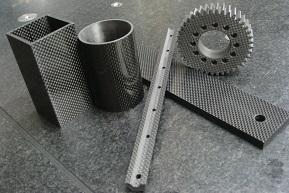
Carbon fiber composite materials, also known as carbon fiber reinforced plastics (CFRP), are composite materials made of carbon fibers and resin (mainly epoxy resin).
As light, strong, and hard materials, they are used in wide range of applications such as sporting goods, industrial, aircraft and automobile components. By selecting suitable resin, it is possible to add features like heat resistance, impact resistance, and flame retardant, and thus provide superior characteristics not found in conventional metals and ceramics to enable a reduction in the weight of parts, give freer design.
Carbon Fiber Pellets
[Close]
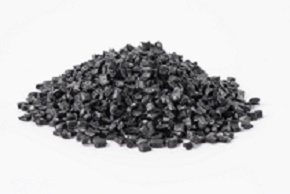
Carbon fiber pellets are thermoplastic molding materials created by blending carbon fiber with various resins to achieve performance that is superior to conventional reinforced resins. Advanced physical properties can be achieved by combining different base resins and carbon fibers, according to the specific application.
Carbon Fiber FMC (CF-SMC)
[Close]
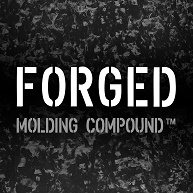
Carbon Fiber FMC (CF-SMC) is a sheet-type intermediate material made of cut high-strength carbon fiber impregnated with thermosetting resin. This material can be press molded, substantially reducing molding time compared to conventional autoclave or oven molding.
In addition, compared with carbon fiber intermediates of Continuous fibers, the random arrangement of Short fibers ensures fluidity and makes it possible to mold intricately shaped parts like those with ribs and bosses.
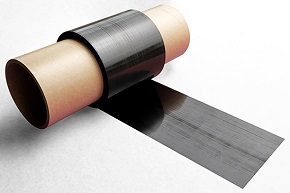
Under Development
Kyron™ ULTRA is a new sheet-like intermediate material developed by Mitsubishi Chemical, in which carbon fibers are impregnated with engineering plastics. It is a high performing carbon fiber composite material in the form of a UD (Uni-Directional) prepreg with carbon fiber in one direction.
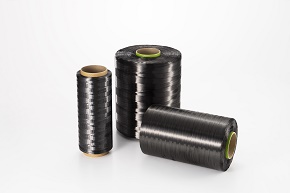
Carbon fiber is a high-strength and high-elastic modulus material, yet its specific gravity is only one-fourth that of iron. It, therefore, enables high strength, high rigidity, and weight-saving in a wide variety of applications.
Carbon fiber tow, made of bundles of untwisted filaments, is the essential material in our carbon fiber product line.
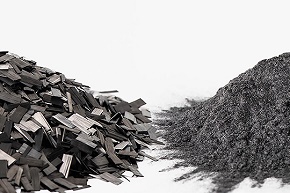
Carbon Chopped Fiber is a product made by chopping carbon fiber tow.
Carbon Milled Fiber is a product made by grinding milling chopped fiber into a powder (milled) form.
Chopped fiber is typically around 3 to 6 mm long, while milled fiber is typically less than 200 µm long. Both of these materials are used to enhance the physical properties of thermoplastic resins and rubbers, and to increase electrical and thermal conductivity.
GaN Wafer (GaN substrate)
[Close]
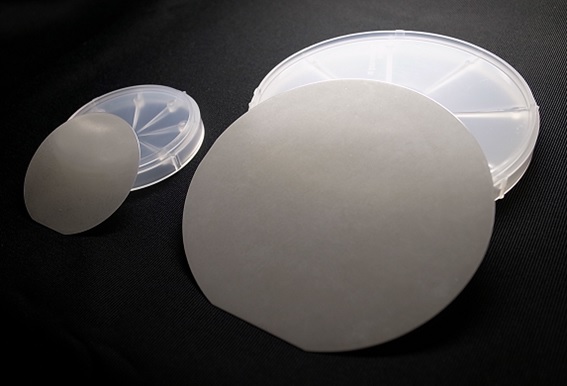
Mitsubishi Chemical's Gallium Nitride (GaN) substrate is a high-quality single-crystal substrate. It is made with original HVPE method and wafer processing technology, which has been originally developed for many years. The features are high crystalline, good uniformity, and superior surface quality. GaN substrates are used for LD applications (violet, blue and green).
Furthermore, development has progressed for power and high frequency electronic device applications. In order to achieve lower defect and higher productivity, we have been developing the GaN substrates manufactured by SCAAT™(*) and SCAAT™-LP(**).
- *SCAAT™ is the brand name of an acidic ammonothermal technology implemented by Mitsubishi Chemical Corporation. This technology was established through the cooperation of Tohoku University, The Japan Steel Works, Ltd., and Mitsubishi Chemical Corporation.
- **SCAAT™-LP is the brand name of a low pressure acidic ammonothermal technology implemented by Mitsubishi Chemical Corporation and The Japan Steel Works, Ltd. This technology was jointly developed by Tohoku University, The Japan Steel Works, Ltd., and Mitsubishi Chemical Corporation.
NEWS LETTER -Gallium nitride (GaN), a material to support future society-([PDF]465KB)
This photosensitive polymer for photo resists is used during the formation of semiconductor circuits.
This material is designed to satisfy strict quality requirements, such as high purity and low metal content, associated with the miniaturization of circuit patterns.
Our services include polymer design, prototyping, and mass production.
This antistatic agent is used to prevent electrons from accumulating on the resist surface during electron beam lithography.
This material is used in advanced photomask manufacturing to help prevent charge-up failures.
Antistatic Agent, aquaPASS™
[Close]
This water-based antistatic agent is derived from polyaniline-based, water-soluble electroconductive polymers.
This agent prevents particles from adhering due to static electricity when used as a coating on films and plastic substrates.
Use of this agent enables the production of thin films with excellent antistatic performance, transparency, and minimal humidity dependency.
During the post CMP cleaning process in semiconductor manufacturing, it is important to remove organic residues and particles on Cu wires and Low-k films without damaging the substrate. Our product, MCX-SDR4, is a high-efficiency cleaning solution suited for semiconductor industries.
Characteristics:
- High efficiency particle removal
- Removes organic residues effectively
- Limits galvanic corrosion on Cu wire
- Limits Low-k damage
- Improves Low-k wetting properties
In recent years, the demand is increasing for high quality removal of metals from small size semiconductor circuits during silicon wafer cleaning process. Star Series meets this demand with semiconductor process chemicals having metal impurity levels below 10ppt.
Products: Hydrochloric acid
MC1 is an electronic chemical processing solution which is a high-performance alternative RCA clean. MC1 contributes to the customer`s total cost reduction, because it can remove both particles and metals, thus reducing the number of steps of RCA cleaning. Features: ・Reduction of metal contamination ・Prevention of cross contamination
AM1 is a high-performance electronic chemical solution used as an alternative RCA clean for batch and single wafer applications. It has the capability to remove both particles and metal impurities. Furthermore, it has superior performance for metal gate cleaning because it does not corrode silicon.
- Single wafer cleaning (realize superior surface cleanliness in a short time)
- Metal gate cleaning (no corrosion of tungsten or silicon)
Epoxy Resin, jER™
[Close]
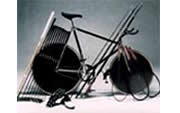
Regarding the jER™ (formerly Epikote™ *) epoxy resin, Mitsubishi Chemical is prepared to support our customers' needs quickly and flexibly. Our production is extremely fast because we have accumulated many years of research with epoxy products. Our manufacturing, sales, research, and development are tightly integrated to enable rapid response to the challenges our customers face. (*Epikote™ is a trademark of Hexion Inc. )
jERCURE™ curing agents for epoxy resins are an abundant set of curing agents that cover the full range from low to high curing temperature with functional groups ranging from amine, mercaptan, and phenol to Lewis acid complex compounds. A curing agent can be chosen from this set to fit the application. There are water-based curing agents for water-based epoxy resins, too.
Diluent(reactive), YED
[Close]
YED is reactive diluents for an epoxy resin that provides low viscosity without compromising the resin's special characteristics.
Phosphors for optical devices
[Close]
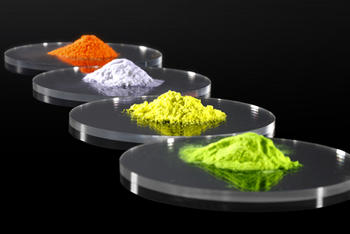
Phosphor is a material which absorbs light energy, such as ultraviolet and visible rays, and converts it into certain light. Mitsubishi Chemical Corporation has long experience in development and manufacture of phosphor for more than 50 years. Based on manufacturing technology derived from this experience, Mitsubishi Chemical Corporation provides phosphors for optical devices such as LED and lasers.
OPC Drum
[Close]
Toner
[Close]
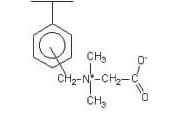
DIAION™ AMP03 is an amphoteric ion-exchange resin with a quaternary ammonium group and carboxy group incorporated into the crosslinked polystyrene backbone. Thanks to uniform 260 µm beads size, AMP03 realizes sharp elution peak in the separation of electrolytes from non-electrolytes, between electrolytes (sodium chloride and sodium sulfate), etc.
The low-odor, low-leachable anion exchange resin reduces the release of total organic carbon (TOC) and amines to prevent offensive odors.
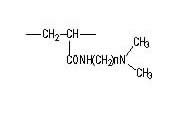
The weakly basic anion exchange resins use either a polystyrene or polyacrylic ester frame and a primary-ternary amino group as the functional group. Although the anion of a salt like NaCl or Na2SO4 cannot be exchanged, the exchange of an anion of a mineral acid such as HCl and H2SO4, or the salt of a weak base like NH44Cl can be carried out.
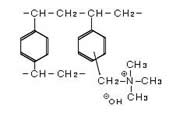
An amino functional group is incorporated into the anion exchange resin enabling the exchange of anions like the Cl- ion and the SO4-- ion. Strongly basic anion exchange resins and weakly basic anion exchange resins can be defined according to the basic strength of the amino functional group.
The ion exchange resin that has a quaternary ammonium group is strongly alkaline and dissociates just like NaOH and KOH. Therefore it is called a strongly basic anion exchange resin.
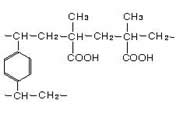
The weakly acidic cation exchange resins have the carboxylic acid group (-COOH) as the exchange group. There are two kinds --- a methacrylic acid type and an acrylic acid type. The acrylic acid weakly acidic cation exchange resin is used for processing water with high carbonate hardness. The methacrylic acid type is used for purification of antibiotics and amino acids.
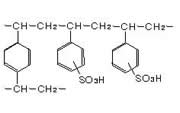
The strongly acidic cation exchange resins are bead-like products which have a sulfonic acid group in the cross-linked styrene frame. They can be used across the full pH range (0-14), and are relatively stable to temperature, even withstanding high temperatures of 100-120℃. They are used in a wide variety of fields including water purification, water softening, wastewater treatment, purification of pharmaceuticals and food, and catalysis.
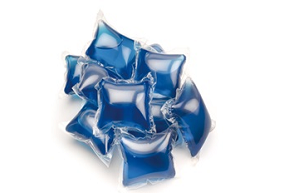
Water-soluble films developed by a specialist in chemical materials
HI-SELON™ is a water-soluble film made from polyvinyl alcohol.
With its excellent heat-sealing property and printability, HI-SELON™ is ideal for use as a packaging materials, but it also provides many other advantages, including high solvent resistance and barrier performance, which are used as materials for packaging of liquid detergent capsules.
OPLFILM™ is the trade name of PVOH(PVA) (polyvinyl alcohol) film for use in polarizing film for liquid crystal displays (LCD). We provide wide-ranging technical expertise and optimum materials that maximize our polarizing film manufacturing experience.
Heat-Shrinkable Tube, HISHITUBE™
[Close]
Sheets for Cards
[Close]
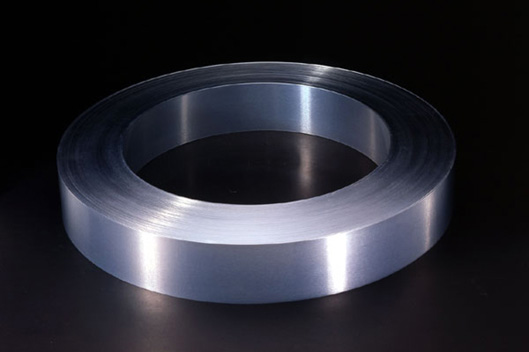
A high‑performance composite that bonds metal and plastic film under extreme pressure—no adhesives required.
Key Features
- Pure Mechanical Lamination
Metals and polymer films are fused through a proprietary process, delivering exceptional peel strength and durability without resin or adhesive layers. - Custom Combinations
Choose your ideal metal + film pairing, thickness and finish to match your exact specifications. - Broad Compatibility
- Metals:
- Aluminum、Stainless steel (SUS)、Electro galvanized steel (SECC)、Zn-Al-Mg alloy (ZAM)
[under development]Copper - Resin Films:
- Polyamide (PA)、Polypropylene (PP)、Ultra high molecular weight polyethylene (UHMWPE)、Fluoropolymers、PET (polyethylene terephthalate)
[under development]PC 、PBT 、PPS、PEI
Specifications & Custom Orders
- Width: up to 500 mm max.
(Actual maximum depends on metal type and thickness—please inquire for details.) - Thickness & Layering: fully customizable—mix and match metal and film layers as needed.
- Special Requests: if you don’t see your preferred metal or film listed, please contact us—many additional materials can be accommodated.
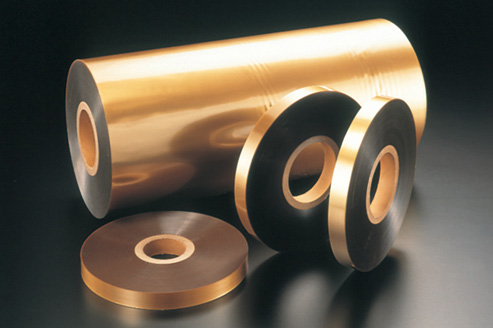
At Mitsubishi Chemical, we offer the high-performance engineering plastic film "SUPERIO™ UT". Leveraging our many years of accumulated technology and experience, we are currently mass-producing films made from PEI (polyetherimide) and PEEK (polyether ether ketone). These films have been adopted across a wide range of industries and applications, including automotive, electronics, and aerospace. To meet the increasingly diverse needs of our customers, we are actively engaged in the development and commercialization of an even broader range of high heat-resistant films. We also offer customized solutions tailored to specific customer requirements. If you are interested in high-performance engineering plastic films, please feel free to contact us.
Electronic Functional Materials
[Close]
Silicone rubber film, KEIJU™
[Close]
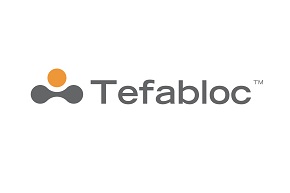
Tefabloc™ CP is based on amorphous polyolefins, which not only have high transparency, but also have unique properties not found in other cyclic olefins (COP/COC).
We are developing products for optical applications such as solar panel cover materials utilizing its transparency, and for high-speed communication applications such as 5G and 6G utilizing its low dielectric properties, and can also design products according to customer requirements.
※For medical application, we introduce Zelas™ CP .
TREXPRENE™ TPV (Thermoplastic Vulcanizate) is a heat stabilized, vulcanized PP / EPDM product. Globally available for a wide range of applications and approved to a variety of Automotive Specifications.
TEFABLOC™ is versatile family of thermoplastic elastomers (TPE). Applies to most of the environments and plastic converting processes.
TEFABLOC™ incorporates several technologies including TPE-S, TPO and TPE-E. Among the large scale of possible properties, some of them are also boosted in process by reactor or dynamic cross-linking.The accurate combination of features leads to tightly satisfy application specifications even the most demanding ones.
Halogen Free Flame Retardant (HFFR) olefin based compound with low smoke solutions (LSZH)
VINIKA™ is vinyl based, soft and rigid formulations designed for a wide variety of applications. Fine-tuned properties such as hardness, heat and impact resistance, colour and much more.
Sunprene™ is high performance flexible PVC-P compounds for demanding environments with outstanding aesthetics.
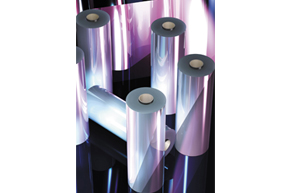
With a comprehensive lineup of polyester film, ranging from a few microns to 350 microns in thickness and featuring well-balanced characteristics such as mechanical properties and heat resistance. Customers across the globe in further increasing applications have been using DIAFOIL.
We integrate three technologies of Mitsubishi Chemicals, namely, excellent and proprietary material technologies, film-forming technology cultivated over many years and surface treatment technology with unique coating, and develop new markets with customers to become a leading global company.
Working closely with the polymer and engineering operations, our polyester film operations take advantage of the latest information and technology to make quality improvement and process enhancement. This allows us to meet a wide range of our customers' needs. In this way, we continue to strive to offer satisfaction to customers and build long-lasting, strong relationships. We are continuing to make efforts, devoting ourselves to R&D activities to provide even more sophisticated products.
Soarlite is the trade name of ethylene-vinyl alcohol copolymer for injection molding application as engineering plastics.
Soaresin™
[Close]
Soaresin™ is used as a stabilizer or purging agent for extrusion.
Synthetic Paper , YUPO™
[Close]

"YUPO" is a synthetic paper made from polypropylene resin as its primary material. It offers extraordinary beauty, strength and flexibility. YUPO combines the advantages of both paper and plastic film, and thanks to its unique qualities, it is used widely in several fields, including the commercial printing, packaging and communication paper.
Water Treatment System
[Close]
4-HYDROXYBUTYL ACRYLATE, 4HBA
[Close]
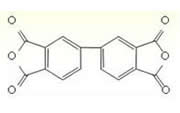
BPDA (3,3',4,4'-Biphenyltetracarboxylic dianhydride) is a raw material for the polyimide resin component of one of the super-engineering plastics. It is used for many important information and electronic technology products such as mobile phones and copying machines.
EINECS: No.219-342-9
Japan Chemical Mfg. Reg.: No.4-833
Japan Poisonous and Deleterious Substances Control Law: Not applicable
Fire Services Law: Not applicable
Terephthalate Plasticizer
[Close]
Phthalate Plasticizers
[Close]
Adipate Plasticizer
[Close]
Other Plasticizers
[Close]
Plastic Filtering Plate
[Close]
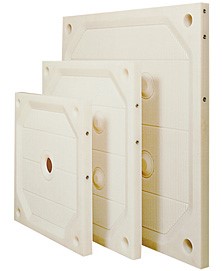
Made form high quality polypropylene (PP), our wide range of filtering materials for filter press machines include lightweight filter plates with excellent chemical resistance and high impact strength, plastic membranes with superb thermal and chemical resistance, and filter-press-plate unit combined with anticorrosive plastic membrane.
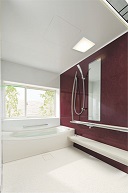
HISHIMETAL is a composites material that is produced by laminating PVC film on a base material such as galvanized steel sheets, stainless steel sheets and aluminum sheets. PVC film is a general purpose film and we have employed it as a laminating film for many years.
This material is used in many different industries because it has metal strength and workability in addition to the design qualities and functional properties of plastic film.
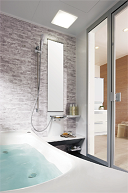
EXUM incorporates galvanized steel sheets, stainless steel sheets, and aluminum alloy sheets as a base material. EXUM is a polyester-based plastic film-laminated steel sheet manufactured by our multi-layer extrusion technology.
This material is primarily used in interior applications due to the combination of metal strength, workability, and design qualities.
Water Purifier, Cleansui
[Close]
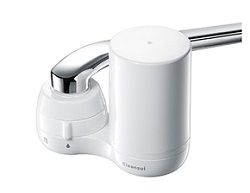
Home water purifier using hollow fiber membrane material. We off a full lineup of high-performance water purifiers including faucet-mounted models, pitcher models, built-in models, and commercial models. We provide the water necessary for life through products to stockpile water for long periods of time and water-softening shower heads with built-in cartridges.
Refer to the Cleansui website for more information.
- Product Finder
-

